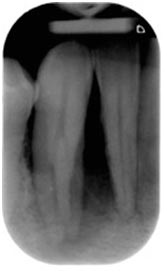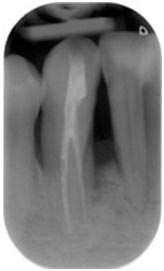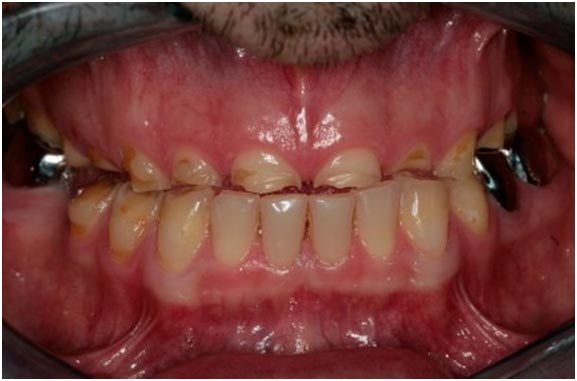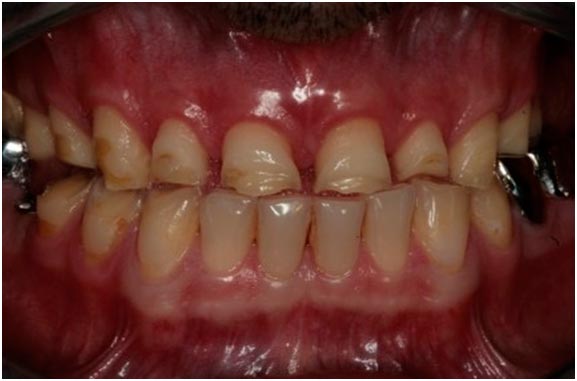Altered passive eruption (APE):
This clinical condition arises when, in the process of the eruption of the teeth, the gum does not recede to where crown and the root come together (the cement-enamel junction, or CEJ) and, as a result, part of the crown of the tooth remains submerged under the gum line, producing short, square teeth. On occasion, if the patient has a broad smile in which a large area of gum shows (gummy smile) the amount of gum visible is accentuated. On occasions, it can also make oral hygiene more difficult and increases the accumulation of bacterial plaque. This situation can be resolved with a simple surgical procedure in which excess gum is removed and the whole crown of the teeth is exposed, immediately improving the appearance of the smile.
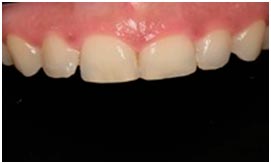
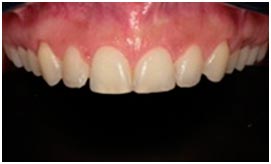
Preprosthetic extension of the crown:
Sometimes there are cavities that grow underneath the gum line and make it impossible to access it correctly to put in a filling. On other occasions, a fractured or worn tooth does not have sufficient healthy tooth above the gum to allow a correct restoration. Therefore, our colleagues who restore teeth ask us to perform a minor extension of the crown so that they can restore the teeth in question as appropriate.
Periodontal regeneration:
Usually, it is not possible to regenerate bone lost due to periodontitis. However, in some very specific cases we can perform regenerative surgical procedures using proteins derived from enamel matrix (Emdogain) or other biomaterials to regenerate bone.
